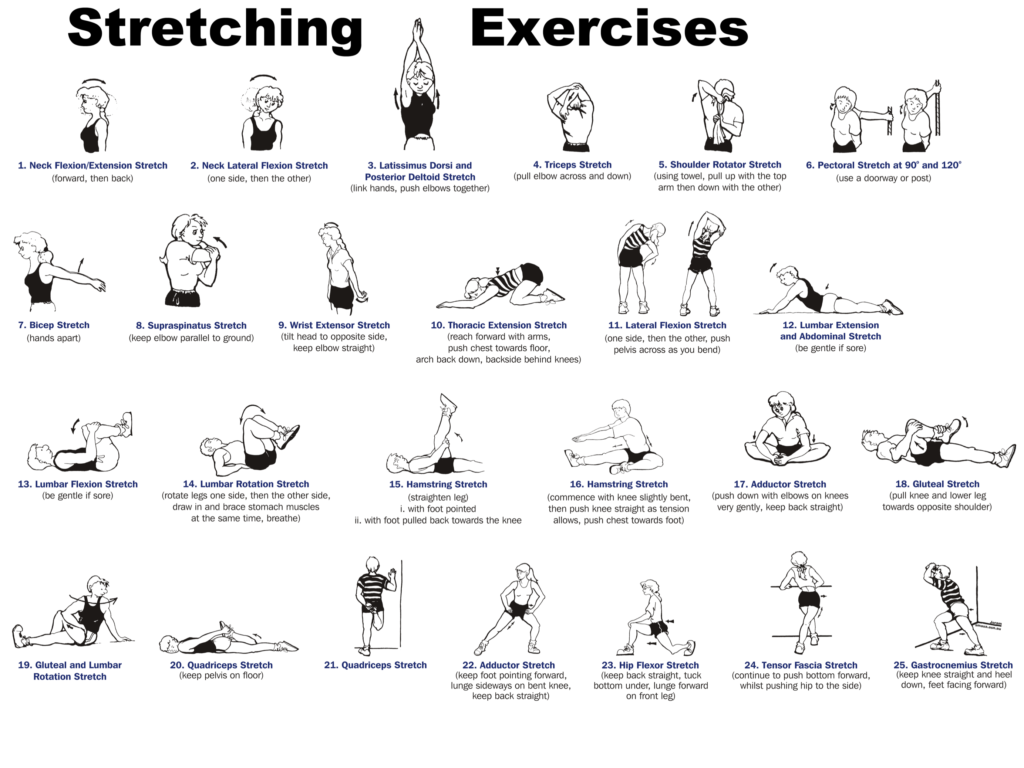We work with the purpose of gaining compensation so we can take care of ourselves and our family, afford a home, afford meals, pay bills, etc. Now look at the bigger picture, to do any of those we need to have optimal health. In the pursuit to optimal health, we train with a purpose. Today, we’re going to dive into what is flexibility, movement deficiencies, and how flexibility training helps everyday life.
Moving is a basic daily action we all do that requires understanding flexibility, and a few other concepts. Whether it’s walking, picking up household items, getting out of bed, playing with our kids, or working out- they all require full range of motion. Flexibility is our capability to be stretched. Flexibility and dynamic range of motion control how we move. Neuromuscular efficiency in a nutshell is our brain gathering the correct muscles to produce/reduce force while stabilizing the body. If flexibility, dynamic range of motion, or neuromuscular efficiency are not working properly we will have some issues moving.
Our body is smart, it will do whatever it takes to move even if it’s not the correct muscles firing (relative flexibility). When this occurs, we experience muscle imbalances. A muscle imbalance can be broken down to poor posture which creates improper movement then leads to injury.
- An example- Tight lats during an overhead movement causes an extension in the lumbar (lower back arch/curve). Extension is caused vacate of lack of range of motion.
Another concept to look at is, altered reciprocal inhibition. In simple terms, a main muscle is tight which creates a weak drive from the muscle which is supposed to lengthen/relax during said movement.
- An example- Tight hip flexor which is supposed to relax during a squat’s drive, causes a decreases drive in the glutes (where the drive comes from).
Synergistic dominance relates to the above example. This is when a muscle which usually is supposed to assist in a movement, takes over for imbalances. If we dig deeper to the above example, the hamstrings, inner thigh muscles, and lower back will compensate for weak glutes.
The last movement deficiency is called arthokinetic dysfunction. Due to abnormal muscular activity, forces at the joints are altered. If we look at the squat one more time, adding something like feet pointing out will alter relationships of muscles at the knees and hips. This leads to knee and back pain.
Flexibility training is important because it can break old patterns of movement which can avoid injury. A popular flexibility training method revolves around corrective, active, and functional flexibility. The basis of these begins with self-myofascial release which is performed to take muscles from a bundled position known as knots, and bring your muscles to a lengthen/straighter alignment. Foam rolling is the most popular and muscle massage guns have increasingly grown. After these are performed, stretching should occur.
Static Stretching:
- Held for time, 20-30 seconds, anywhere between 1-3 sets
- Ex. Kneeling hip flexor, lying hamstring

Active-Isolated Stretching:
- Performed as repetitions, 1-2 sets x 5-10 reps while holding 1-2 seconds
- Ex. Active kneeling hip flexor, active lying hamstring
Dynamic Stretching:
- Force and momentum will move the joints, 1 x 10 reps, 3-10 movements
- Ex. Air squats, lunges, single-leg balance squat touchdown
Flexibility training should be a staple to your training and everyday life. If you can’t move properly, you most likely won’t maximize your results. Ideally, these should be a part of your pre workout and cool down routine. Most importantly, we want to have optimal health and flexibility will create longevity.
If you are ready to implement flexibility training into your life and begin your transformation, https://beasttransformations.com/contact-me/ click the link to set up a free consultation.
In Health,
Coach Izz
_________________________________________________________
References
Sutton, B. G. (2021). NASM essentials of personal fitness training. Burlington, MA: Jones & Bartlett Learning.
